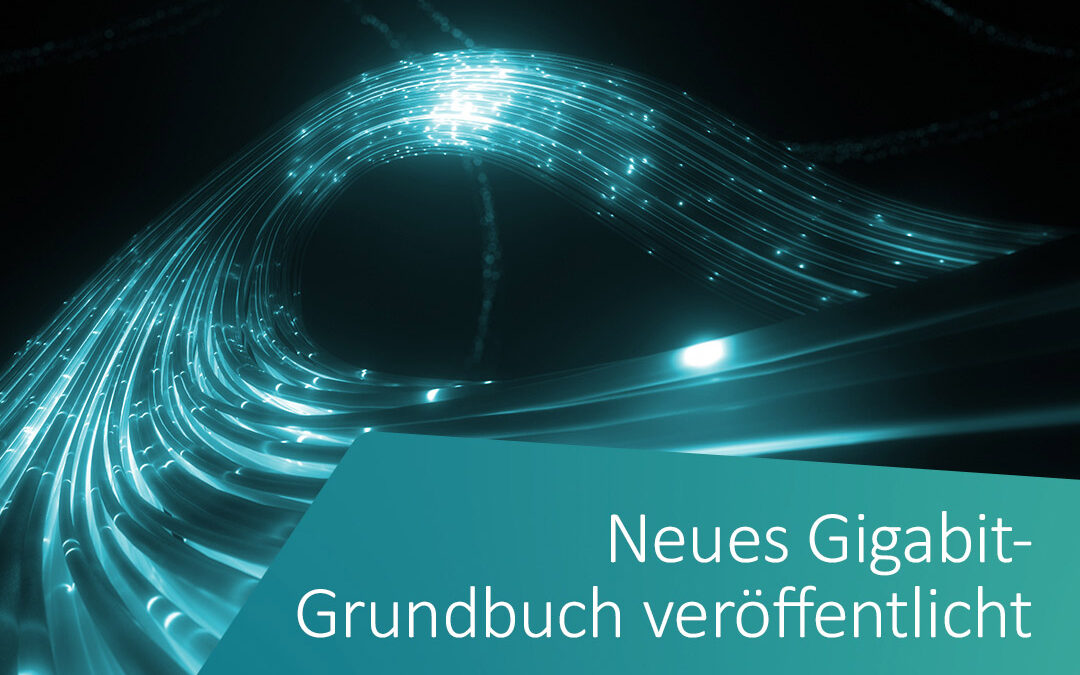The Federal Ministry for Digital and Transport Affairs and the Federal Network Agency have created a central register for mobile and fiber optic expansion, the gigabit land register. All important information on telecommunications infrastructures in Germany can now be accessed centrally on the online platform www.gigabitgrundbuch.bund.de.
The aim of this land register is to make it easier for companies, public administration and local authorities, for example, to plan the expansion of fixed and mobile networks. It should also give citizens a better overview of the availability of broadband and mobile networks. The land register will enable investment and funding decisions to be made more quickly and in a more targeted manner. This will significantly accelerate the expansion of digital infrastructure. Federal Minister Dr. Volker Wissing sees the gigabit land register as a major step towards digitalization: “We are thus implementing a central measure of the gigabit strategy and modernizing our country. A successful digital policy requires well-founded information on telecommunications infrastructures. Together with the Federal Network Agency, we have created a data hub that shows in detail and in a user-friendly way where we stand in the expansion of gigabit networks. The Gigabit Baseline is an important basis for further accelerating the expansion of fiber optic and 5G networks. Our aim is to continuously develop the data platform and implement further applications. This includes detailed information on future expansion projects and properties that could be considered for expansion.” Klaus Müller, President of the Federal Network Agency, echoes similar sentiments: “For the Gigabit Grundbuch, we are using our expertise in data collection and analysis from the infrastructure atlas and mobile communications monitoring. In the future, we will publish an even more comprehensive overview of the expansion of broadband networks.”
The gigabit land register consists of three basic services
Citizens’ platform: This is based on the previous broadband atlas, the center for current broadband coverage in Germany for fixed and mobile networks. The citizens’ platform can be viewed by everyone and shows the available technologies and speeds for citizens by address. Analysis platform: This platform contains further evaluations and needs-based presentations specifically for those responsible in public administration. Planning platform: The planning platform is a further development of the infrastructure and construction site atlas and is aimed specifically at companies involved in the expansion. Preparations for the new measurement package, which will also begin in 2023, are also intended to improve the analysis of mobile coverage in Germany. The coverage reports from mobile network operators will then be supported by measurements based on a corresponding concept in order to better reflect the experiences of mobile network users on the ground. Together with the German Federal Network Agency’s Funkloch-app (an app that documents dead zones of reception) and a successively expanded collection of measurement data, this will provide valid and consistent findings on mobile coverage and the need for support in cities and rural areas.
How the data comes together
The central platform relies on accurate and up-to-date data. For example, data provided by the mobile network operators is incorporated into the broadband atlas. This provides a picture of mobile network coverage. This is then supplemented by the so-called Funklochkarte (a map that shows dead zones of reception). This is where the real data on mobile network coverage recorded by users via the Funkloch-app is recorded. In addition, values of the data transmission rates measured regionally by consumers in the fixed and mobile networks are included. In the future, the planning platform will be another piece of the puzzle for the gigabit land register. This is aimed in particular at companies expanding in the telecommunications market, as information on existing and planned infrastructures is collected here, making it possible to identify potential for shared use or co-location.

